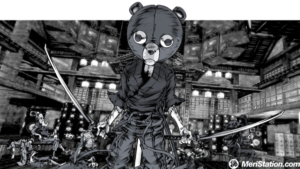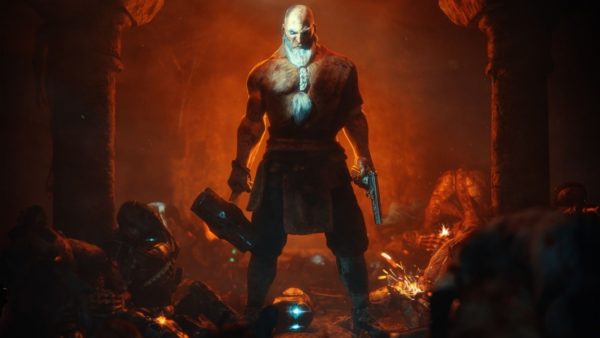Afro Samurai adapted in 2009 the peculiar manga and anime of Takashi Okazaki and Gonzo, respectively, in a sort of beat ’em up for PlayStation 3 and Xbox 360 that although it did not revolutionize the genre, it did manage to transfer such a singular universe that
mixed samurai, hip-hop and feudal steampunk with a just acceptable result. Now, and after the cession of the original development of Namco Bandai Games to Redacted Studios and Versus Evil , comes its sequel to PlayStation 4 , Xbox One and PC
in a downloadable and episodic format, a title that preserves the identity of the saga -action, blood, cel shading and katanas, all with a lot of style- but that does not manage to adapt to the current times due to a series of setbacks that totally hampers the experience at your command. Let’s see if Afro Samurai 2: Revenge of Kuma – Volume One manages to convince their fans in our analysis .
Combos Afro?
Those who played the first installment in the past generation may be disappointed to discover that in Afro Samurai 2 we do not control Afro; and is that this time we take
the role of Kuma, as the title suggests the game itself. Kuma, Afro’s childhood companion in the samurai school, embarks on an orgy of blood and viscera with the aim of taking revenge on his old friend, whom he blames for the death of his loved ones. The title collects certain elements of the original work to tell us a new story arc,
only element of interest for fans of the saga. So, after rushing down a cliff, the Seven Voids recover Kuma’s body and reconstruct it as if it were a disturbing puzzle, joining parts of his body and adding others to make him a kind of murderous cyborg with a thirst for revenge .
Dressed with his two katanas and a teddy bear head of considerable dimensions, Kuma embarks on a journey to madness with the aim of ending any unsuspecting person who crosses his path. From here and from the first moment at the controls of
Revenge of Kuma, we will experience all kinds of sensations, mostly negative. The first thing that will hit us with force will be its careless staging , both in the audiovisual section and on the technical level. Developed under the Unity 5 graphics engine,
Afro Samurai 2 totally disappoints in this sense, perhaps the worst stopped along with its gameplay, but there will be time to delve into the second. All in all, do not be surprised to feel a high-definition remastering of the past generation, yes, in a title proposed for new generation consoles and PC.
Modeled as basic as careless impropriety of the present moment, textures -in their majority- at low resolution that on diagonal screens are even more scandalous, empty scenarios without any appeal, a use of cel shading that tries to hide these and other graphic deficiencies …
To all this we must add a series of bugs and framerate downloads that not only give bad image; they even get to condition the gameplay in irritating confrontations – if we die we must start again unbearable waves of enemies – and quick time events very badly calibrated.
In addition, the animations are not level, with forced and robotic movements. So much so that moving is even more attractive the first delivery; we can only praise the treatment that the protagonists receive at the level of detail and an artistic design, in general, that respects the essence of the work that adapts.
In this sense we will be told a story through different techniques, being the presence of vignettes in the purest manga style the most successful; thus, the different arts and illustrations are at a good level, although the constant monologues – not dialogues – of a narrative the less soporific breaks the already low rhythm of general play . We do not exaggerate
if we say that of the almost three hours it took us to complete this first chapter, half correspond to animated scenes and eternal descriptions in slow motion, all in perfect English without the option to have subtitlesof any kind; the texts of the different menus
also come in the language of Shakespeare, it must be said, with an uninspired and outdated design. And if that were not enough, the different voices present an unequal calibration throughout the whole adventure, with which we will have to raise and lower the volume to try to understand the least, with the inconvenience that this entails.


